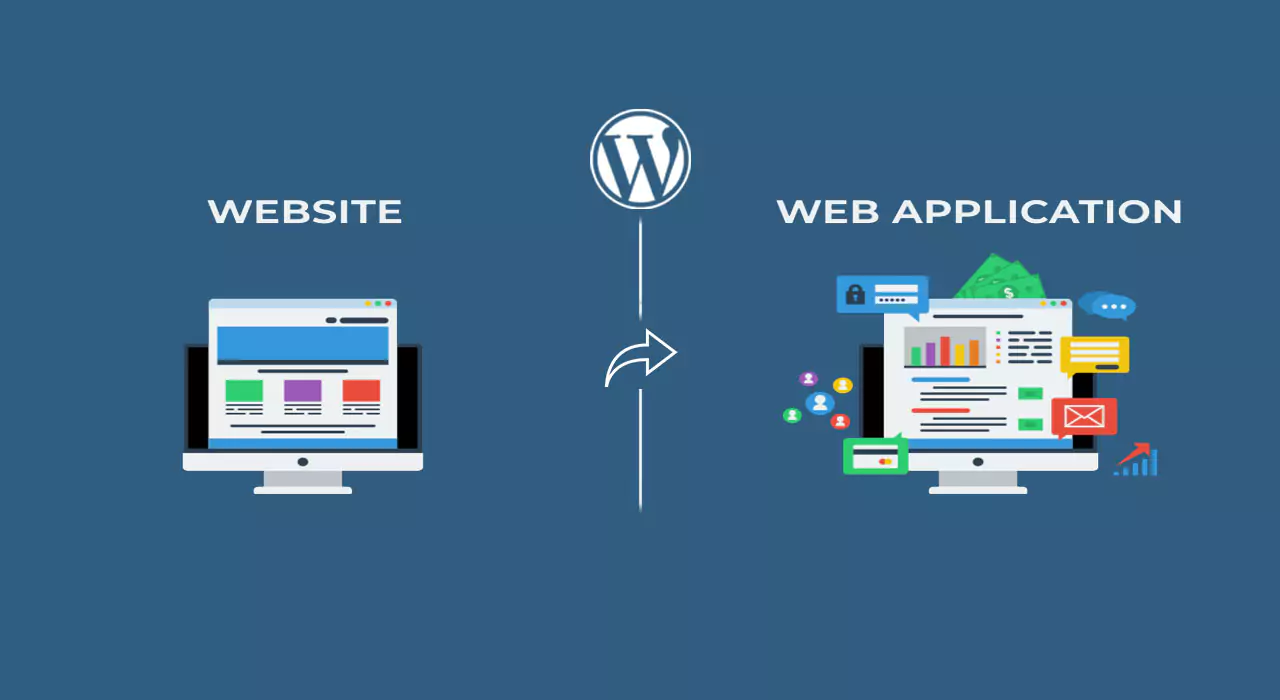Other than being the world’s most popular Content Management System, WordPress also serves as a great boilerplate for building Web Apps.
Yes, you can build Web Apps like Instagram, Freshbooks, or Exponentially using the WordPress PHP package as your starting point. You can build customized features, integrate APIs, and register users, with the same wholesome experience as you’d find in any other Web App.
At this point, you might have questions like…
- But isn’t WordPress a CMS, and not a framework?
- Wasn’t WordPress used for building websites?
- Why should I choose WordPress over Laravel?
Let’s answer these and many other questions about the benefits of using WordPress for custom web development. We’ll also learn how to deploy a web app using WordPress.
At Dikonia, we have completed a number of projects that utilize WordPress as the base structure for production-level Web Apps. The given benefits inspire us to shed some light on how it’s done and when it is feasible.
Website Vs. Web App
The terms “Websites” and “Web Apps” can be used interchangeably but for the scope of this article, we’ll separately define both things.

Websites – Websites are primarily meant for lucidly displaying information, in the form of rich media such as text, images, and videos. They’re also used for lead capturing and engaging visitors with contact forms.
Web Apps – Web Apps provide all the features of a web app alongside additional business functionalities such as User Accounts, E-commerce listings, and Payment processing.
Therefore, we’ll be focusing on customized web development for building functionalities that your business can benefit from. We’ll use the underlying features present on WordPress for complementing custom needs.
Why Use WordPress For Your Web App
Building your Web App on top of WordPress is a strategic decision that is focused on reducing development effort and costs. Over the years, the WordPress PHP package has grown from being just a CMS to an extensible back-end tool that can be readily customized for diverse needs.
Let’s explore why using WordPress for Web Apps, makes sense.
EXTENSIBLE CODE STRUCTURE
WordPress comes with a code structure and design philosophy that is easy to extend as per nuances. The team behind the development of WordPress has steered the WordPress project in a way that it can be widely used by a large number of developers.
There are already 55,000+ WordPress plugins already created by independent developers that can be used to extend the functionality of WordPress.
Built-in Features
WordPress comes with a number of features that are constant across most Web Apps and you can save an ample amount of time by directly using them in your project.
Some of these features include:
- Login and User Authentication
- User Account Creation and Management
- Frontend Theme files
- Backend Database
- RESTful API
- Custom Post types
- Contact Forms
- Emailing Functions
Not only are these features ready to use in your project, but they are also easily customizable. You can define your own conditions in the code. Therefore, rather than building everything from scratch, you are just reiterating things, which saves a lot of time.
Open Source Software
WordPress is completely Open Source with its public repository available at Github. What this means for your business is;
- It is free to download and use for your Web App
- The code is maintained by a large community of developers, making it stable and secure
- There are no loyalties levied on you for generating revenue from your web app (SaaS basis)
- You will continue to receive official updates from WordPress that you can integrate into your own Web App if you wish so
Great Choice for MVPs
Most new businesses like to validate their idea first, before fully investing in it. Minimum Viable Product development is one option wherein a substantial product depicting the core features of the product is created ahead of the final release.
WordPress is a great choice for building MVPs as it already comes with the front-end and back-end scaffolding. You can quickly build customized features in the WordPress package, and start pitching it to investors or validate your idea on a limited audience.
Building an impressive MVP isn’t child’s play. OYE Labs estimate how building an MVP can cost as much as $25,000 per month. With WordPress, the costs can significantly come down, as the timeline for your MVP Web App is shortened.
BUILDING YOUR FIRST WEB APP USING WORDPRESS
In order to best understand how to use the existing features of WordPress for your Web App, we’ll have to assume a simple use case.
Let’s assume you’re building a “Surveys App” wherein users are rewarded for completing surveys published by you.
| App Requirements | Present on WordPress | Custom Development Needed |
| User Login | ✅ | |
| User Profile | ✅ | |
| Front-end Forms | ✅ | |
| Survey Generator | ✅ | |
| Reward Points System | ✅ | |
| Email Trigger Events | ✅ | ✅ |
| Site Admin Dashboard | ✅ |
In the above table, you can see 7 core requirements of the application and also that 5 of them are already fulfilled by WordPress. The rest 2 will be custom developed.
User Login
The first step is to build a system from where users can register themselves and login to your Web App.
The User Registration Plugin offers ready-made functionalities for building a customizable registration page. You can quickly onboard users and store custom data such as username, age, nationality, and also let users create passwords.
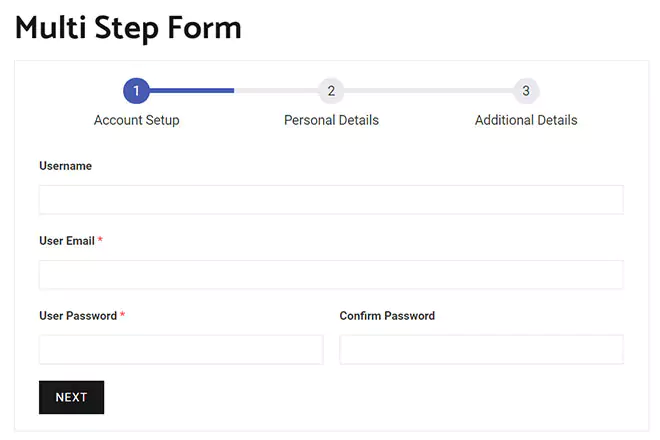
User Profile
The User Profile section is used to display the user’s account-related information. You will need to extend the basic WordPress fields (Address, phone number, Birthday, and Gender) with custom fields such as age, nationality, etc as per your needs.
The Advanced Custom Fields Plugin offers you this functionality. You can ask the user to submit any number or type of data while registering and display the same easily in their profile section.
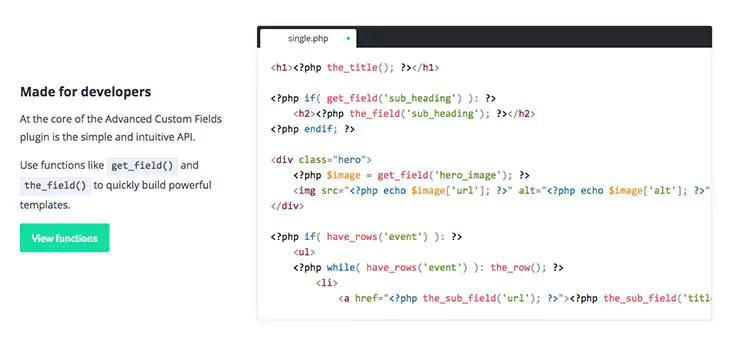
Front-end Forms
Apart from the login process, you’ll need forms for a variety of needs. This could be for obtaining feedback from the user, signing them up for the newsletter, or simply helping them contact you.
For this, you can use WP Forms Plugin that will help you quickly create forms for all kinds of use cases. The Plugin offers a no-code interface which lets you generate forms with ease while saving time.

Survey Generator
In order to serve surveys to users, you’ll have to generate them somewhere. Basically, you’ll need an interface for enlisting survey questions, choices, conditions, etc.
Opinion Stage offers a fully developed backend solution where you can build the surveys that your end-users will respond to. You can easily customize the appearance of the surveys and use different types of questions at the same time.
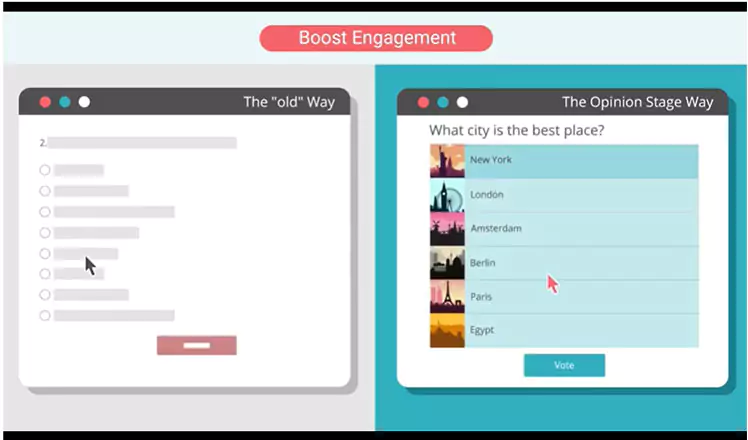
Rewards Point System
For every survey that a user responds to, they’ll get reward points that will hold some value. To distribute points, you’ll need to track which user has responded to which survey and then assign the corresponding points to their profile.
This is where things get tricky. You not only need to control the access to surveys but also maintain a database of the points. This will require connections between the Survey Generator and User Profile.
For this, we’ll build the following custom functionalities:
- Ability to assign “Points” to every survey
- Credit these Points to the user whenever they complete a survey
- Control the number of times a user can respond to a given survey
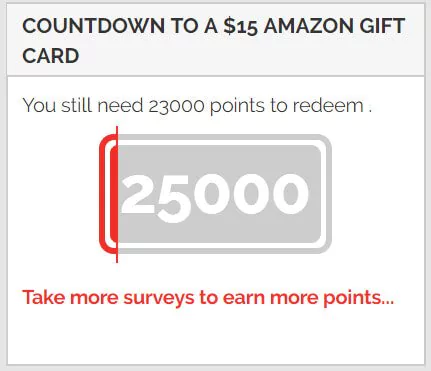
You might need a custom WordPress Developer to make these connections. As custom code would be written for this project, it’s better to trust an expert.
Email Trigger Events
Another very important functionality for any Web App is to be able to send out email notifications to users when an important change takes place.
For our use case, we’ll need email notifications for events like when a survey is completed by a user, when a new survey is made available on the site, when a new user signs up, and so on.
The Notifications Plugin will help you create customized triggers and conditions for sending out emails. Thankfully, it also comes with a template builder and the option of Merge Tags, which gives you the ability to design emails as per your custom needs.
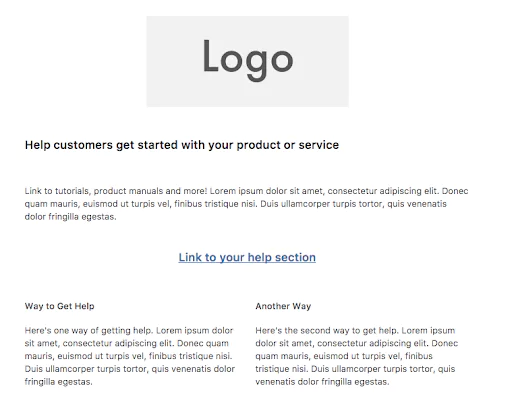
Site Admin Dashboard
The final step is to create a visually descriptive and easy-to-navigate Dashboard from where you can easily check how your Web App is performing.
The dashboard will contain various metrics, reports, and status of elements being used in the site. It will also contain the various settings and menus for controlling what happens on your Web App’s frontend.
In order to build this as per your liking, you’ll need a custom WordPress developer who can mould the default WordPress backend. As this is a highly intricate task, it will need a good understanding of how WordPress elements behave and connect with each other.
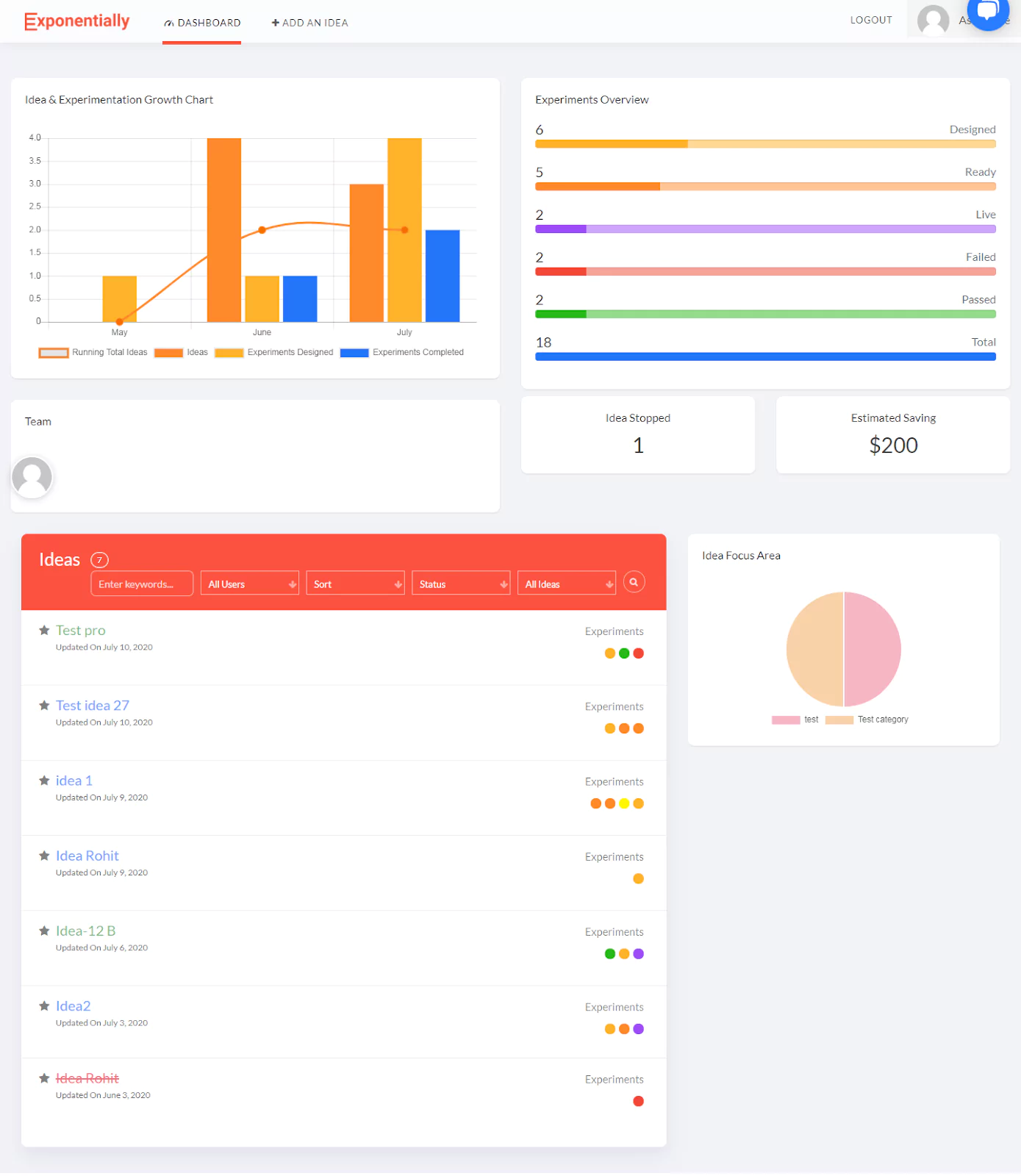
Above is an example of a custom dashboard developed for one of our projects at Dikonia for a Web App that uses WordPress as the base.
Conclusion
WordPress is undoubtedly a reliable yet cost-effective solution for quickly building Web Apps. You can reduce the effort needed to get your MVP rolling and translate your business idea into a working product. The business and technical benefits of WordPress make it a viable solution for deploying Web Apps.
With a little bit of developer support and overall knowledge of WordPress plugins, you can create your own Web App. Checkout examples from our projects and get in touch with us for more on building your Web App using WordPress.

